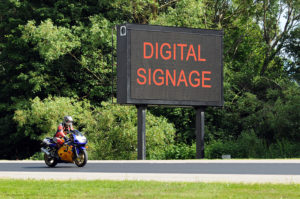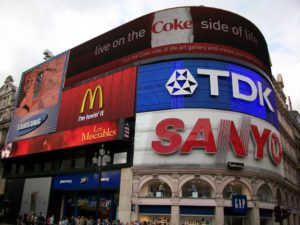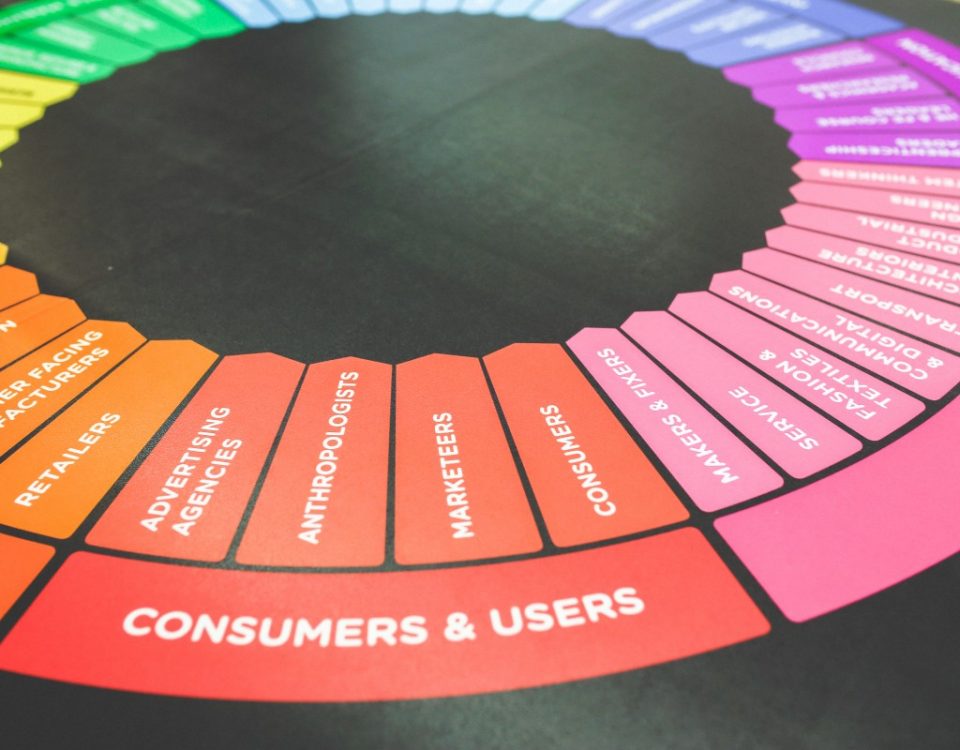
Even if you haven’t thought of it as digital signage, you have seen digital signs and even reacted to them. They are present in many public areas such as airports, businesses, the lobbies of buildings, and on college campuses.
In general, digital signage can be defined as a sign that, instead of having a static physical message, has a digital message that changes from time to time based on several different variables. Digital signs come in a variety of different types and serve many purposes.
Informational
Many digital signs exist solely to provide information to viewers. For instance, the airport has a type of digital signage that shows arrivals and departures, the gate number they are associated with, and whether they are on time or delayed.
Other signs that provide viewers with information are in building lobbies. These signs might tell where businesses are located in the building, direct viewers to events that are happening, and even contain advertisements about businesses who have offices there. They may also contain ads from businesses close by that might be of interest to visitors.
Advertising
 There are also many digital signs that are dedicated almost exclusively to advertising. These include large billboards that change content from time to time or signs located in airport walkways, malls, bars, restaurants, and other businesses. Most of the time, these screens run ads from businesses close to their location or other local attractions. They might also contain ads from large businesses who simply want a brand presence in that particular area.
There are also many digital signs that are dedicated almost exclusively to advertising. These include large billboards that change content from time to time or signs located in airport walkways, malls, bars, restaurants, and other businesses. Most of the time, these screens run ads from businesses close to their location or other local attractions. They might also contain ads from large businesses who simply want a brand presence in that particular area.
There are larger digital signs along roadways too. These are not only geographically related ads, but they also run certain ads at certain times which relate to what the drivers who are going by are probably interested in at the time. For example, a billboard might run an ad for a pizza delivery service or a local restaurant at 5 p.m. facing a roadway that is busy because of commuters heading home.
In the morning, that same billboard, or one located across the road facing traffic traveling in the other direction, might advertise a local coffee shop or a great breakfast place. The advantage of this kind of advertising is that it is not only targeted to customer location, but it is also linked to the time of day and what customers are likely to need or respond to at that time.
Hybrid Signs
Digital signs can also contain a hybrid of content. The informational sign can also run ads along the side of the data it is providing. For example, a visitor can not only determine in which office they are meeting a client, but he or she can also know where to go to lunch afterward.
Sometimes signs also display short videos, usually product sponsored, so they serve as entertainment for the viewer along with ads and even information. These signs are often popular, and can even gather a small crowd at shopping malls and in other areas where they are located as people engage with the content displayed there.
Digital Signage in Small Business Marketing
Digital signage is a great tool for marketing and has several advantages over other advertising methods.
The reasons are simple, and all are related to the types of signs mentioned above. We have all seen digital signage, and it has gotten our attention. So why is it a good tool to have in our marketing efforts?
- Digital Signage is Affordable: Advertising on digital signage is probably more affordable than you think, depending on where it is located and how long your ad is displayed for. Compared to print and other more traditional ads, they are truly inexpensive.
- Digital Signs are in the Right Place at the Right Time: Instead of a more shotgun approach like you might get with a local paper or a magazine, you can target your potential customers where they shop, eat, play, and even work. This means the right people see your ads, and they can be scheduled at peak times when your customers are most open to information about your product.
- Digital Signs are Dynamic: Need to edit your ad? Want to know if one works better than another? You can easily make changes without waiting for the next magazine or edition of the newspaper to come out — your ad can be changed quickly.
- Digital Signs allow you to Measure ROI: Want to justify the expense to your boss? Easy enough. Place a coupon code, QR code, or unique URL to a landing page in your ad, and you can tell what customers you are gaining through which digital sign. To measure ROI, you can also use a Google phone number or promote specific hashtags for social media. You can even buy more than one ad and A/B test them to see which one is getting a better response.
Digital signs can be an affordable way to get your name out there if you are a small business.
Digital Signage for Branding
 Even larger companies want their brands to be represented well where their customers are most likely to see them. Reinforcing branding and increasing brand recognition, even in a localized area, has great value.
Even larger companies want their brands to be represented well where their customers are most likely to see them. Reinforcing branding and increasing brand recognition, even in a localized area, has great value.
This is especially true in areas and businesses that get a large amount of foot traffic. Your ad can reach thousands of new visitors in a day for pennies on the dollar compared to television and print advertising.
Not only is it affordable, but digital signage may also be in just the right place to catch the eye of your customer. From retail stores to shopping centers and restaurants, your ad can reach buyers when they are ready to buy and in a location where your product is readily available.
Digital signage is a versatile tool. Signs can be used to convey information, display advertising, or a combination of both. Marketing on them is an affordable solution for businesses both large and small and can be targeted both geographically and temporally for optimum performance.
Have digital signage needs, or just have questions? Contact us at [email protected]. We’re here to serve you and meet your digital signage marketing needs, or even to just answer some questions for you and get you started using digital signage as part of your overall marketing strategy.



